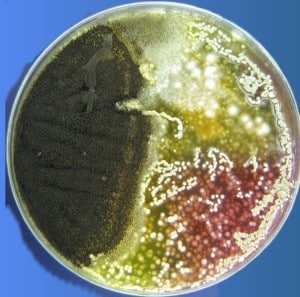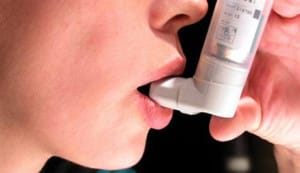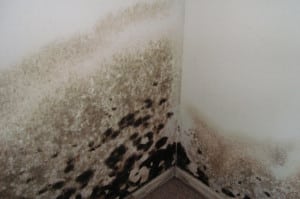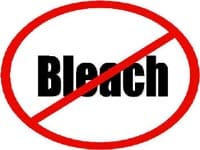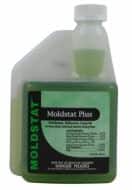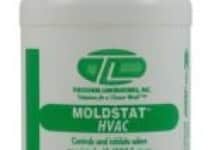What Is Mold?
Mold, most simply put, is one of two physical forms that members of the very large Kingdom of the Fungi can take. In the classification systems of all life forms, a Kingdom is the very largest group, and there are only five such groups recognized at this time, those being: red algae, green plants, animals, fungi and a more recently discovered group called stramenopiles (I have chosen to not use the more formal Latin names for the sake of simplicity and clarity). The other physical form that fungi can take is yeast. A very small number of fungi, including some that can cause devastating disease in humans, can exist in either the mold or the yeast form, depending on environmental conditions and sometimes the age of the colony. However, the vast majority of fungi are either mold, otherwise known as filamentous fungi because of the ways in which they grow and reproduce by means of filaments known as hyphae, or yeasts.
There are literally tens of thousands of known species of fungi ranging from the microscopic to the easily visible mushroom to some of the largest known living things on the planet that cover literally multiple square miles in the forests of Oregon. The vast majority of these known fungi are molds. Of course, it must also be noted that it is very likely that there are tens of thousands more species of fungi, most of them probably molds, that haven’t even been discovered or described as of yet.
Should I Fear Mold?
Many people are fearful of molds and in some limited cases this fear is justified, but the great majority of molds in the world are pretty much harmless, which is a good thing since molds are truly ubiquitous, meaning that they exist essentially everywhere that people live and often even in places that people don’t live. It is impossible to go outside, or even stay inside, and not be in the presence of millions of mold spores that you can’t see with the naked eye. These spores are on everything you touch, everything you eat, and in every breath you take. Given that, it should be clear that most of them are harmless because if they were not people wouldn’t be able to live very long given how severely outnumbered we are by molds!
Sometimes Molds ARE Dangerous
In some, fortunately rare, cases, molds can cause infections in people, although usually in people who are very seriously ill from other causes or in people who have an immune system that is not functioning properly or an immune system that has been destroyed by certain medical treatments such as bone marrow transplantation, a treatment for some forms of cancer. Yeasts, the other form of the fungi, are more likely to cause infections in humans, although these are usually superficial infections of the skin or mucous membranes and are easily eliminated with anti-fungal medications.
Very rarely, some molds will cause illness, sometimes severe, in people who are otherwise not sick and unfortunately, these infections can be very hard and expensive to treat, often requiring at least a year of continuous medications that by themselves make people quite ill. Sometimes, especially among certain groups of people, these serious mold infections can be fatal. Mold and yeast infections can be hard to eliminate with medications because humans and fungi are closely genetically related, and that often means that medicines that are fatal to the fungi are also not good for humans because of that similarity. But again, these infections are not common and are usually limited to specific geographic areas. The most common of these serious infections are Coccidioidomycosis, most often found in the American southwest and the far northwest of Mexico, and Histoplasmosis, most commonly found in the Ohio and Mississippi River valleys.
Mold MIGHT Be A Problem For Some
Other types of mold are quite common in our household environments and in some cases, especially when there are very large quantities of mold growth and/or if a person is allergic or otherwise sensitive to mold spores, especially when breathing them, a situation that is most common in people who have other airways disease or problems such as asthma, otherwise harmless molds can become a problem that requires remediation, usually involving both the removal of the existing mold contamination and the prevention of future growth.
Mold Basic Requirements
Any mold, regardless of the species or color, requires two things to grow: nutrition (food) and moisture. For long term mold prevention it is ESSENTIAL to eliminate at least one of these requirements. Unfortunately, modern wall board, known most commonly by the brand name of SheetRock, provide an excellent source of nutrition for most all molds, so it is impossible in practical terms to eliminate all nutrition sources, so the moisture sources must be eliminated to prevent mold regrowth over time. Any seepage source from the exterior and any leaking plumbing in the interior must be corrected and maintained. Correcting these problems may require professional contractor assistance depending on the degree and source of the problem.
Mold Removal Basics
Once the moisture source is eliminated the existing mold must be removed. The best means to accomplish this will vary depending on the location and extent of the mold overgrowth, but in many cases, unless the mold growth is extensive, involving complete walls, rooms, and the substructure, many people with even some basic home maintenance and improvement skills can clean up the mold on their own.
A chemical agent that will kill mold on contact is practically essential because without the use of such an agent, the mold is very likely to enter the air in sufficient quantity to recolonize new surfaces. A water-based or water-diluted mold killer will keep aerosols from forming, but to be on the absolute safe side, the use of protective equipment is essential. When cleaning up mold with any chemical agent always wear a respirator mask such as an N-95 mask that can be found in the paint department of most any hardware or home improvement store, along with gloves, long sleeves, long pants, and shoes. Even if the chemical you are using is relatively harmless to humans if exposed externally, these measures will help prevent mold contamination of your lungs and/or skin, which could cause respiratory problems, or at the very least, allow the mold to transfer through the home on your body.
Why You Shouldn’t Use Bleach
While many people will turn to sodium hypochlorite, or household bleach, for mold cleanup, this solution leaves a great deal to be desired. The most obvious drawback to bleach is that it is destructive to many materials, including even some metals that are commonly found in household areas where mold frequently occurs such as in laundry rooms and bathrooms. In addition, bleach, by its very design, will damage or destroy colored fabrics, meaning that it absolutely cannot be used to remove mold from most any fabric or upholstery. Also, bleach will kill the SURFACE mold, but it does not always kill the roots of the mold, due to the large size of the bleach molecules, and while it does cause the COLOR of the mold to disappear, that is not the same thing as the mold actually being gone. Without the color to guide you, it can also be hard to know which areas or surfaces need to be wiped clean and treated with a preventative application.
MoldStat Is A BETTER Solution to Mold
These limitations to the use of bleach can all be avoided by the use of a product from the MoldStat family of mold remediation products. All MoldStat products have undergone extensive testing to satisfy the rigorous requirements of the United States Environmental Protection Agency (EPA) to be listed as safe and effective, when used as directed, for the removal of existing mold and even the prevention of future mold regrowth (EPA Reg. No. 10324-72-9367 MoldStat products are safe for most any surface, are easy to use, are highly concentrated so a small and affordable amount provides for literally gallons of cleaning strength solution, and because MoldStat contains absolutely no bleach, it can even be used on colored upholstery and fabrics, making it possible to clean and salvage otherwise unrecoverable household items. MoldStat comes in a variety of formulations, providing options that will be sure to meet your specific mold removal and prevention needs. As an added bonus, MoldStat is also EPA registered as effective against a long list of other disease causing bacteria, viruses, and fungi, so when you use MoldStat to resolve mold issues, you are also leaving behind surfaces that are also free of other contaminants and pathogens you might not have even thought of, providing even greater peace of mind.
If mold is a problem you are facing, be sure to consider giving the MoldStat family of products a try; you won’t be disappointed!
